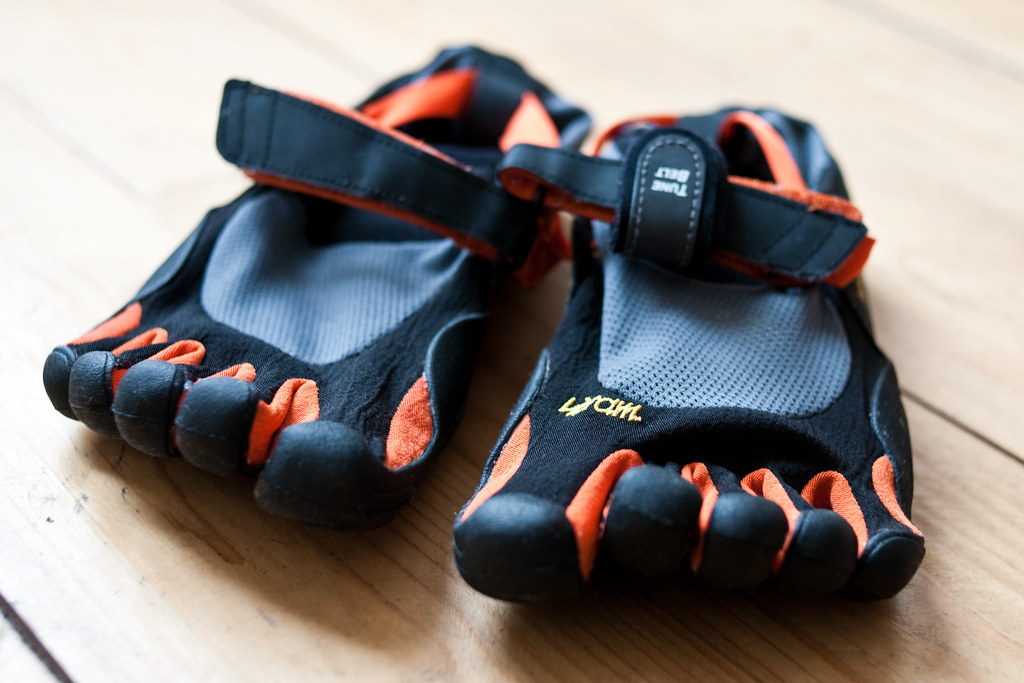Deciding whether or not to wear socks with barefoot shoes is a common dilemma for those new to this footwear trend.
Barefoot shoes offer minimalist designs and a close-to-the-ground feel, giving individuals a more natural and grounded walking or running experience.
They provide a flexible and thin sole without any arch support or stability elements, allowing the feet to move more freely and mimic the feeling of walking or running with no shoes on.
Here’s Why You Can Wear Socks With Barefoot Shoes If You Wish:
Benefits of wearing socks include added warmth, protection, and reduced friction. Drawbacks include compromising the natural feel and ground connection, and the type of socks chosen can affect comfort and foot function.
Ultimately, it comes down to individual needs and circumstances.

Wearing socks with barefoot shoes is indeed a matter of personal preference.
Some people choose to wear socks for various reasons, such as added warmth, protection from sweat and moisture, or even extending the shoes’ life. Others believe that going sockless enhances the direct connection between the foot and the ground, fully embracing the barefoot experience.
Ultimately, the decision to wear socks with barefoot shoes depends on one’s preference, comfort, and the specific type of activity they participate in. Each option offers unique benefits, and it’s essential to weigh these factors when choosing.
Regardless of what one opts for, it’s important to remember that the primary goal of barefoot shoes is to promote a more natural and comfortable movement of the feet.
Socks and Barefoot Shoes
Barefoot shoes offer a unique experience for those who prefer a minimal and natural feel during physical activities.
One question that often arises is whether or not to wear socks with these shoes. This section will discuss the benefits and drawbacks of wearing socks with barefoot shoes.
Benefits of Wearing Socks With Barefoot Shoes
There are several advantages to wearing socks with barefoot shoes.
One of the primary benefits is the added warmth and protection for the feet. Wearing socks can help keep the feet cozy, especially during colder months or in cold environments. Furthermore, socks can provide a layer of cushioning, which may help alleviate any discomfort caused by the shoe’s materials.
Another advantage is the reduction of friction between the foot and the shoe. A suitable pair of socks can help prevent blisters and other skin irritations caused by friction.
Additionally, socks can help wick away moisture, keeping the feet dry and comfortable during workouts or hikes.
Drawbacks of Wearing Socks With Barefoot Shoes
While there are benefits to wearing socks with minimalist shoes, there are also a few potential drawbacks.
One possible concern is that socks compromise the natural feel and ground connection these minimalist shoes intend. Some individuals may feel that wearing socks reduces their ability to sense the terrain beneath their feet, which is one of the primary aims of minimalist shoes.
Another issue to consider is the type of socks. Some socks may be too thick or restrictive, hindering the proper splay and movement of the toes. Choosing socks that complement the design of minimalist shoes, such as toe socks or wide toe box socks, is essential.

In conclusion, it comes down to personal preference when deciding whether to wear socks with minimalist shoes. Weighing the benefits and drawbacks can help individuals choose their needs best.
This table summarizes the advantages and drawbacks of waring socks with barefoot shoes:
Advantages of Wearing Socks with Barefoot Shoes Drawbacks of Wearing Socks with Barefoot Shoes Added warmth and protection for the feet May compromise the natural feel and ground connection Reduction of friction between the foot and the shoe, which can prevent blisters and other skin irritations Some socks may be too thick or restrictive, hindering the proper splay and movement of the toes Can help wick away moisture, keeping the feet dry and comfortable during workouts or hikes Personal preference may vary Can extend the life of the shoes by providing a barrier between the feet and the shoe, protecting them from sweat and moisture
Factors to Consider
Foot Health
When deciding to wear socks with barefoot shoes, it’s essential to consider the impact on your foot health. Socks can affect foot function as they may restrict toe movement and inhibit sensory input.
However, some individuals still prefer wearing socks, which provide a protective layer between the feet and shoes.
Comfort
Personal comfort plays a significant role in wearing socks with minimalist shoes.
Some people find wearing socks more comfortable, while others prefer going sock-less. Consider trying both options to determine which feels best for you.
Hygiene
Wearing socks with barefoot shoes can help maintain better hygiene by absorbing sweat and moisture, which can extend the life of your shoes.
Additionally, socks can help prevent odor and bacteria buildup in your shoes, maintaining a cleaner environment for your feet.
Climate
Consider your climate, as it may influence your decision to wear socks with minimalist shoes. In colder climates, wearing socks can provide warmth and insulation.
In contrast, wearing socks may increase sweating and discomfort in warmer temperatures, making it preferable to go sockless or wear moisture-wicking socks.
Activities
Lastly, consider the activities you plan to engage in while wearing barefoot shoes. Wearing socks may provide additional protection and support for high-intensity activities or sports.
For more leisurely activities or simply walking around, you might prefer the feeling of being truly barefoot and opt not to wear socks.
Socks Recommendations
Material Types
When choosing socks to wear with minimalist shoes, selecting materials that are lightweight and breathable for optimal comfort is essential. Here are a few materials to consider:
- Bamboo: This natural fiber is soft, moisture-wicking, and antimicrobial, making it an excellent choice for barefoot shoe wearers.
- Merino Wool: Merino wool is a lightweight, moisture-wicking, and odor-resistant material that can keep your feet warm in cold weather.
- Synthetic Blend: A blend of synthetic materials such as polyester, nylon, or elastane can provide breathability, comfort, and a snug fit.
Fit
Another aspect to consider when selecting socks for barefoot shoes is the fit. Socks should complement the minimalist design of minimalist shoes and not restrict your feet, allowing for natural movement. Here are some fit recommendations:
- Wide Toe Box Socks: Socks with a wide toe box will allow your toes to spread out and allow for proper blood circulation.
- Toe Socks: Toe socks keep your toes separated, helping maintain proper alignment and prevent blisters or rubbing.
- Compression Socks: Although not necessary for all wearers, those needing compression socks can find ones with toe sock options to allow for foot movement while providing necessary compression.
Ultimately, trying different sock materials and fits is essential to find what works best for your individual needs and comfort.
Conclusion
Deciding whether or not to wear socks with minimalist shoes largely depends on individual preferences and circumstances. Some people may wear socks for added warmth, protection, or style, while others might prefer going completely barefoot.
Wearing socks can help extend the life of your barefoot shoes by providing a barrier between your feet and the shoe, protecting them from sweat and moisture. If you decide to wear socks, consider opting for toe socks with separate pockets for each toe, allowing for natural toe movement and keeping them in their original shape.
In some cases, individuals prefer to wear barefoot socks or sock shoes, which combine the benefits of both socks and barefoot shoes. Ultimately, choosing whether to wear socks with barefoot shoes is a personal decision that will depend on individual preferences and the specific activities being undertaken.
NOTE: We may receive a small commission if you use the links to buy from Amazon.
Sources
- What Socks To Wear With Barefoot Shoes? The Best Foot Friendly Guide – Zero-Drop Monk
- Minimalist/Barefoot Running Basics – REI Co-op
- Do You Wear Socks With Barefoot Shoes? – Barefoot Julian
- Barefoot Socks for Barefoot Shoes: Toe Socks and Wide Toe Box Socks – Barefoot Shoe Guide
FAQs
Q: Can I wear regular socks with minmalist running shoes?
A: Yes, you can wear regular socks with barefoot running shoes. However, it’s important to choose socks that complement the design of the shoes, such as toe socks or wide toe box socks. This will allow for natural movement and prevent restriction.
Q: What are the benefits of wearing toe socks with barefoot running shoes?
A: Toe socks keep your toes separated, helping maintain proper alignment and prevent blisters or rubbing. They can also reduce friction between the toes and the shoe, which can prevent skin irritations.
Q: Are there any drawbacks to wearing socks with barefoot running shoes?
A: One potential drawback of wearing socks with barefoot running shoes is that they may compromise the natural feel and ground connection these minimalist shoes intend. Some individuals may feel that wearing socks reduces their ability to sense the terrain beneath their feet.
Q: Can wearing socks with barefoot running shoes affect foot health?
A: Socks can affect foot function as they may restrict toe movement and inhibit sensory input. However, some individuals still prefer wearing socks, which provide a protective layer between the feet and shoes. It’s important to consider the impact on your foot health when deciding to wear socks with barefoot running shoes.
Q: What type of socks should I wear with barefoot running shoes?
A: When choosing socks to wear with barefoot running shoes, selecting materials that are lightweight and breathable for optimal comfort is essential. Materials such as bamboo, merino wool, or a synthetic blend can provide breathability, comfort, and a snug fit. Additionally, socks with a wide toe box or toe socks can allow for natural movement and prevent restriction.


